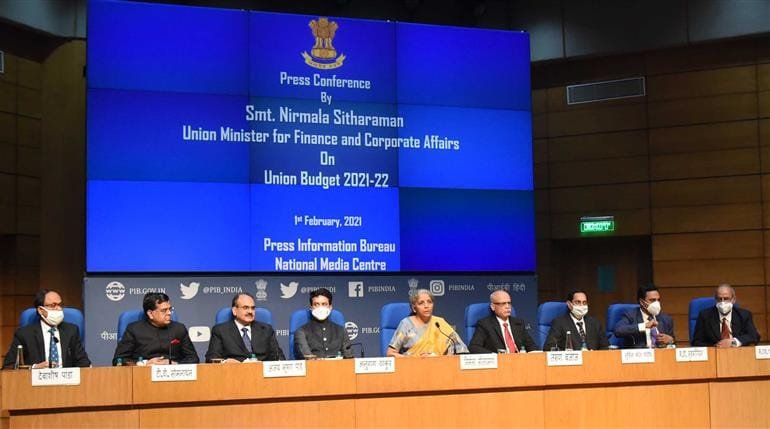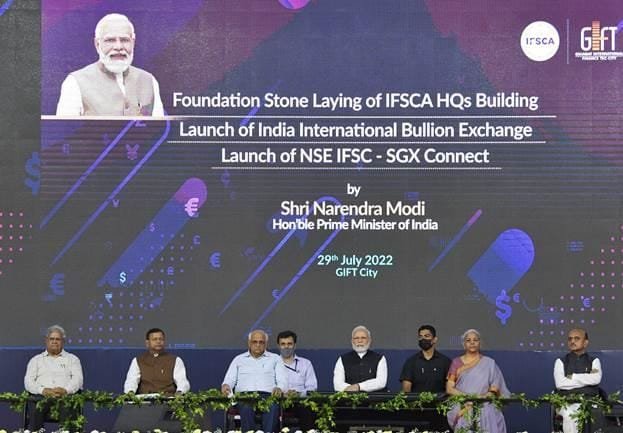India builds momentum for 10% GDP growth in 2022
The Indian government is likely to provide further support to the financially-strapped public sector banks, having allocated a capital of Rs.200 billion in Budget 2021-22 for the state-owned lenders as part of its broader efforts to get positive growth for the economy, albeit in 2022.
But it will take a long time for the Indian economy to heal from the COVID-19 pandemic but it is clearly building momentum for a forecast real GDP growth of 10% in fiscal 2022 as activity resumes and the country continues to reopen, according to S&P Global Ratings on 2 Feb 2021.
The Indian government’s Rs.200 billion capital allocation for public sector banks is in line with the rating agency’s expectations, and it believes that it is sufficient for now. “While this sum will be supportive to public sector banks, in our view, we believe that there is a very high likelihood of further capital support from the government if necessary.”
The government also announced in its budget that it will look to establish a “bad bank” to manage lenders’ troubled assets. This, alongside a strengthening of the National Company Law Tribunal framework, could in principle benefit banks by ensuring that management bandwidth is not spent on recoveries from weak credits.
“Likewise, we believe that the resolution of troubled assets could be faster with weak assets consolidated in a single entity, rather than multiple banks negotiating resolution terms,” said S&P Global.
The government also mooted in the budget the privatization of two public sector banks. “We expect that this process would require legislative changes, though it is well within the government’s stated plans for the sector. Nevertheless, the planned stake sale could affect our view of government support for the participating banks,” said S&P Global.
The government’s disinvestment campaign will also be crucial to its revenue prospects, with Rs.1.75 trillion in related revenues planned for fiscal 2022. The central government fell well short of its ambitious Rs.2.1 trillion disinvestment revenue target amid the pandemic in fiscal 2021. Prospects for disinvestment should be much stronger next year, and the government’s second attempt at listing state-owned Life Insurance Corp will likely be pivotal to its success.
The broader economy will only recover to its pre-COVID output level in the next fiscal year, says the rating agency, which has pencil in an improvement to a negative 7.7% growth in the current fiscal year, better than previous forecast of -9%.
“We estimate that GDP per capita will fall below US$2,000 in fiscal 2021,” said S&P Global in its latest views on the Budget 2020-21 budget tabled in parliament on 1 Feb 2021.
The fiscal 2022-21 budget, ending 31 March 2022, represents a comprehensive effort by the central government to shore up the country’s nascent economic recovery, it noted.
But the brawny spending program also entails higher-than-expected general government deficits–at more than 14% of GDP this fiscal year and 11.6% in fiscal 2022, cautioned S&P Global.
“While we currently see no material effect from the budget on India’s key credit factors, the economy’s brightening growth prospects will be critical to maintaining the sustainability of India’s public finances, with general government debt likely to hover at more than 90% of GDP over the next few years.”
Amid uncertainty over enduring pandemic-related risks, the government’s fiscal 2022 budget includes a variety of measures that should aid the economy in getting back on track. These include a much higher expenditure allocation to healthcare, up 137% compared with fiscal 2021, as well as productivity enhancing investments in transportation infrastructure, powering a 26% rise in capital expenditure. The budget’s emphasis on capital expenditure marks a noteworthy shift, and higher investment in India’s physical infrastructure should help to raise investment potential and competitiveness in the economy over time.
India’s consistently strong real GDP growth is an important support to the sovereign ratings, and the government’s efforts to fortify growth prospects should help to maintain the economy’s healthy long-term prospects. Should economic growth materially underperform, weaker financial savings generation in the economy could imperil the government’s ability to continue to finance itself at relatively affordable rates.
Sustained high deficits could also distort capital allocation, pressuring private sector investment, believes S&P Global.
Aggressive provisioning to help heal the economy will be costly. The Indian central government’s reported shortfall of 9.5% of GDP in fiscal 2021 was bigger than the agency had expected, and the general government shortfall is highly likely to exceed its previous forecast of 12.5% of GDP this year.
The prospect of consolidation from these heights, while maintaining a significant degree of support for the economy, poses a stout challenge to India’s policymakers, according to S&P.
The government will seek to balance its spending imperative against its limited fiscal headroom by consolidating its finances at a much slower pace than it planned prior to the pandemic. Against a pre-pandemic deficit target of 3.5% of GDP, the central government will seek a relaxation of the Fiscal Responsibility and Budget Management (FRBM) Act (enacted to ensure fiscal discipline) to allow deficits higher than 4.5% of GDP up to fiscal 2026.
As a consequence of India’s exceptionally high fiscal deficit this fiscal year, in combination with the economy’s record contraction, S&P estimates that the general government’s net stock of debt will surge by about 18% to 92% of GDP by the end of fiscal 2021. With the deficit set to remain higher than 10% of GDP in fiscal 2022, and likely to recede only gradually thereafter, strong nominal GDP growth will be critical in the government’s plans to grow its revenues at a clip of 23% next year, and in keeping the debt stock stable at just above 90% of GDP through 2023. #budget #economy #banking #financing #investment /fiinews.com









